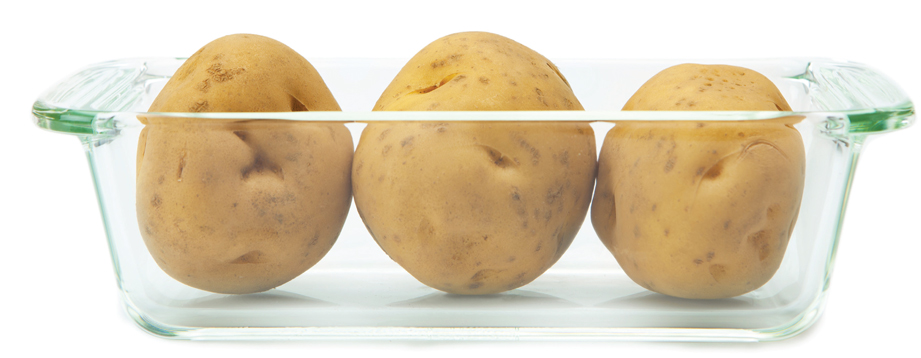There is growing interest in the research of resistant starches. Most of the carbohydrates in the diet are starches, which are long chains of glucose found in many foods. Not all of the starch we eat gets digested. During the digestive process, some of the starch doesn’t get processed because it is resistant to digestion.
This is exciting news because until now, carbohydrates was shunned, leaving many of us hungry and cranky in an effort to watch our weight and health. However, foods that are rich in resistant starches act similar to soluble fiber and help solve many digestive problems. They do not cause spikes in blood glucose or insulin after being eaten and they provide substantially fewer calories. Research has found that resistant starch can trigger hormonal response that makes us feel more satisfied, lowers blood sugar levels, improves colon health and lowers the risk of cancer.
There are 4 different types of resistant starch.
Type 1 is found in oats, barley, grains, seeds and legumes and resists digestion because it is bound within the fibrous cell wall of the plant.
Type 2 is found in some starchy foods, including raw potatoes and green bananas. However, once these foods are cooked, their compositions change and they act like ordinary starches.
Type 3 is known as retrograde resistant starch because this type forms after Type 1 or Type 2 resistant starch is cooked and then cooled. These cooked and cooled foods can be reheated at low temperatures, less than 130 degrees, and manage to maintain the benefits of resistant starches. Heating at higher temperatures will again convert the starch into a form that our body can digest.
Examples include cooked and cooled parboiled rice, cooked and cooled potatoes, and cooked and cooled properly prepared (soaked or sprouted) legumes. If you give your cooked potatoes or rice a chance to cool, you can cut the calories by 50% with the same taste and texture.
Type 4 is man-made, formed via a chemical process. This is added by many food companies to lower the calories in their foods.
Once resistant starch reaches the large intestine, bacteria attach to it, and digest or ferment the starch. This is when we start to see the benefits of resistant starch. In one study, when people consumed 15 – 30 grams per day of resistant starch, they showed improved insulin sensitivity. This study was done on overweight and obese men who saw a weight loss equal to approximately 10% of body weight. Another benefit of these super resistant starches is that they have a “second meal effect.” The benefit for glucose levels exists not only during the time when resistant starch is consumed, but it has an additional positive effect on blood glucose and insulin levels for the next meal as well.
There are many benefits to including resistant starch in your menu. Resistant starch has been shown to aid in weight loss. Studies have found it resulted in decreased appetite and decreased fat storage in fat cells. Other benefits included a remarkable change in the gut microbiome of obese patients to be more similar to that found in lean individuals with weight loss. One of the noticeable changes was an increased butyrate production by gut microbes. Butyrate acts as a powerful anti-inflammatory agent for the cells in the colon. This helps keeps toxins in the gut and out of the bloodstream.
That can be one of the ways that resistant starch is associated with decreased risk of colorectal cancer. They also protect the cells from DNA damage, cause favorable changes in gene expression, and increase apoptosis (cell death) of cancerous or pre-cancerous cells.
There are many available common food sources of resistant starch such as green unripe bananas, plantains, properly prepared cooked and cooled parboiled rice or legumes, and cooked and cooled potatoes.
If you are on a low carbohydrate diet or don’t tolerate those foods well, you can add resistant starch to your diet without adding digestible carbohydrates. Bob’s Red Mill Unmodified Potato Starch is one of the best sources, with eight grams of resistant starch in one tablespoon. Potato starch is generally well tolerated. Plantain flour and green banana flour are also excellent sources of resistant starch. There may be benefits to including all three of these sources instead of relying on a single form. These are relatively bland in flavor and can be added to cold or room temperature water, almond milk, or mixed into smoothies. Keep in mind that to enjoy the benefits, the foods should not be heated over 130 degrees.
If you try adding resistant starch to your diet, start with small doses of about ¼ teaspoon once daily, and very gradually increase the amount. You may notice some initial increased gas and bloating as your gut flora changes and adapts. If you experience a lot of discomfort, decrease the amount you’re taking for a few days until your symptoms resolve, and then try increasing again gradually.
Studies indicate that the benefits of resistant starch may be seen when consuming around 15 to 30 grams daily (equivalent of 2-4 tablespoons of potato starch). This may be too much for some people to tolerate, but benefits can be had from smaller doses as well. If you experience marked GI distress with small amounts of resistant starch, this may be an indication of small intestinal bacterial overgrowth, and it may not be a good fit for your gut. With small doses that your gut can tolerate, hopefully you will feel better, fuller, have better insulin sensitivity, and improve your gut health.








